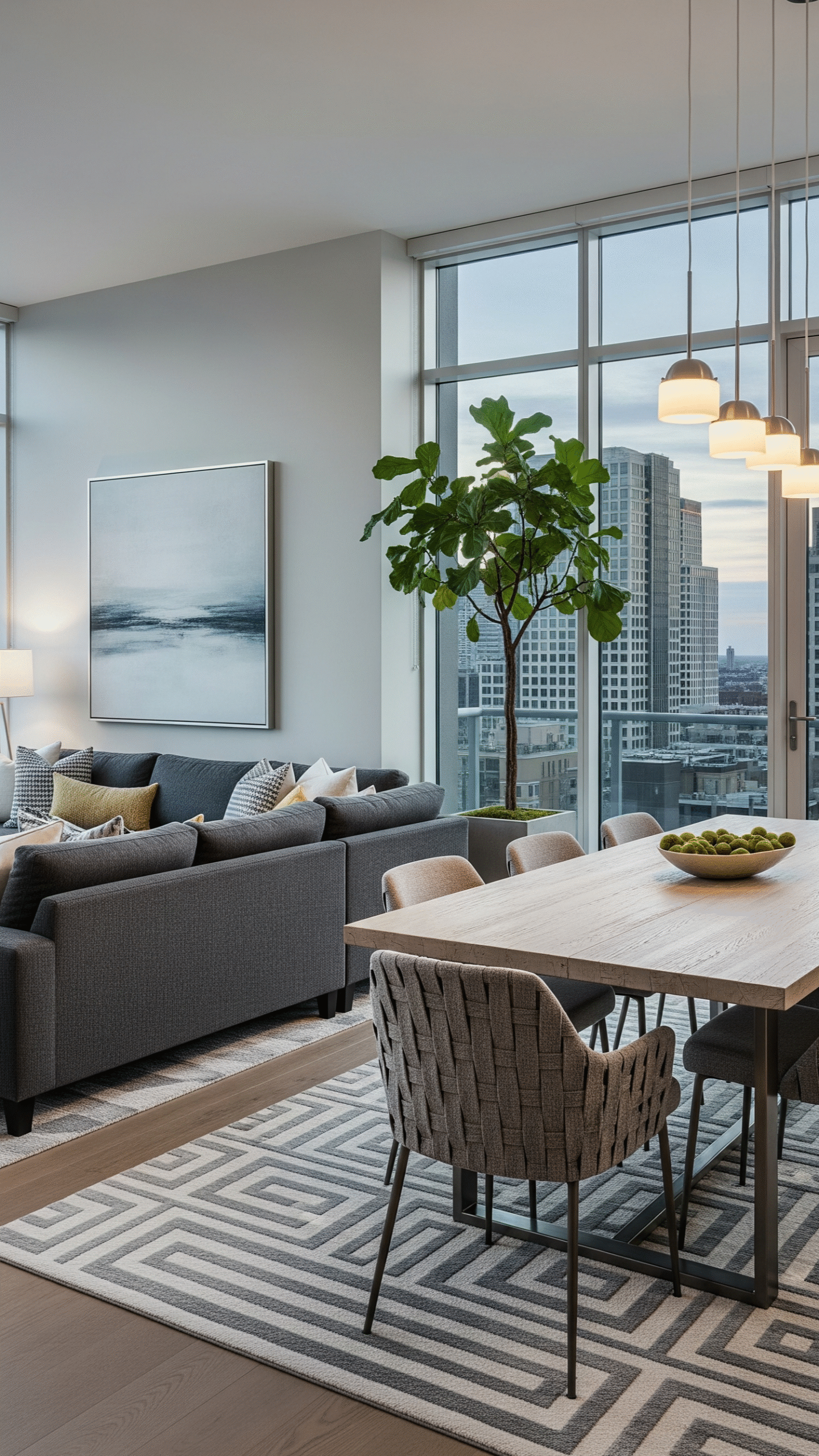
Living Room Dining Room Combo Ideas to Maximize Your Space
When you live in a home with limited square footage, combining areas is often the smartest way to make the most of what you have. One of the most popular and practical solutions is creating a living room dining room combo. This design approach not only saves space but also enhances flow, encourages connection, and gives your home a cohesive look. Whether you live in a compact apartment, a townhouse, or even a larger home, this layout can be both functional and stylish when planned thoughtfully.
In this article, we’ll explore practical tips and design inspiration to help you create a living room dining room combo that feels spacious, comfortable, and beautiful.
1. Define Spaces with Rugs and Furniture Placement
When two rooms share one area, clear visual boundaries are essential. Rugs are one of the simplest ways to define each zone. A large area rug under the sofa can distinguish the living room, while a smaller rug beneath the dining table marks the eating space. Similarly, thoughtful furniture placement can create a natural separation. For instance, placing the back of a sofa toward the dining area subtly divides the two sections without closing off the space.
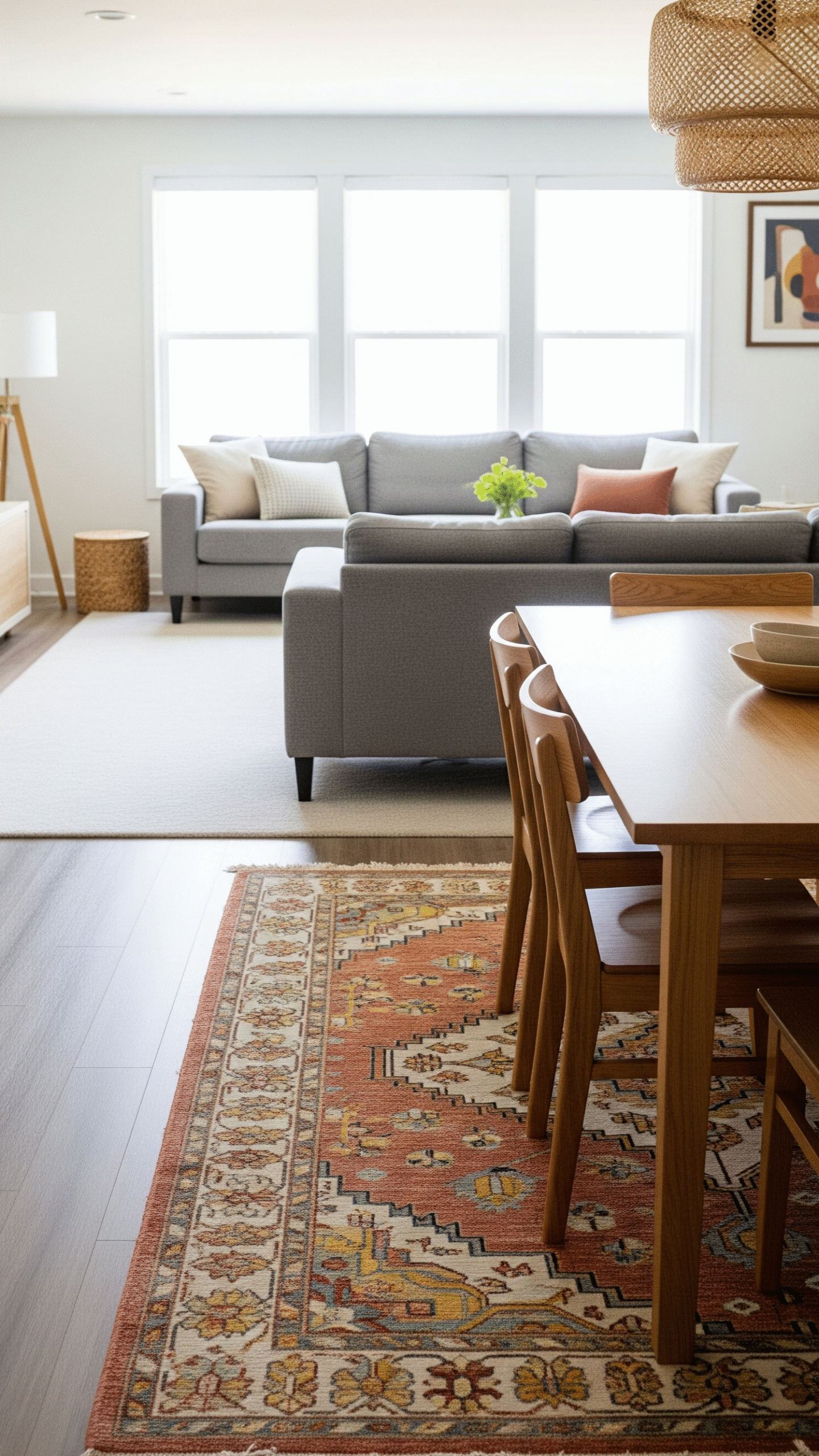
2. Choose a Cohesive Color Palette
The key to a seamless living room dining room combo is unity. Select a consistent color palette for walls, furniture, and decor that ties both spaces together. Neutral tones such as white, beige, and gray work beautifully to create an open, airy atmosphere. You can then add pops of color with throw pillows, dining chairs, or wall art. For a bold statement, consider an accent wall that visually connects the two areas.
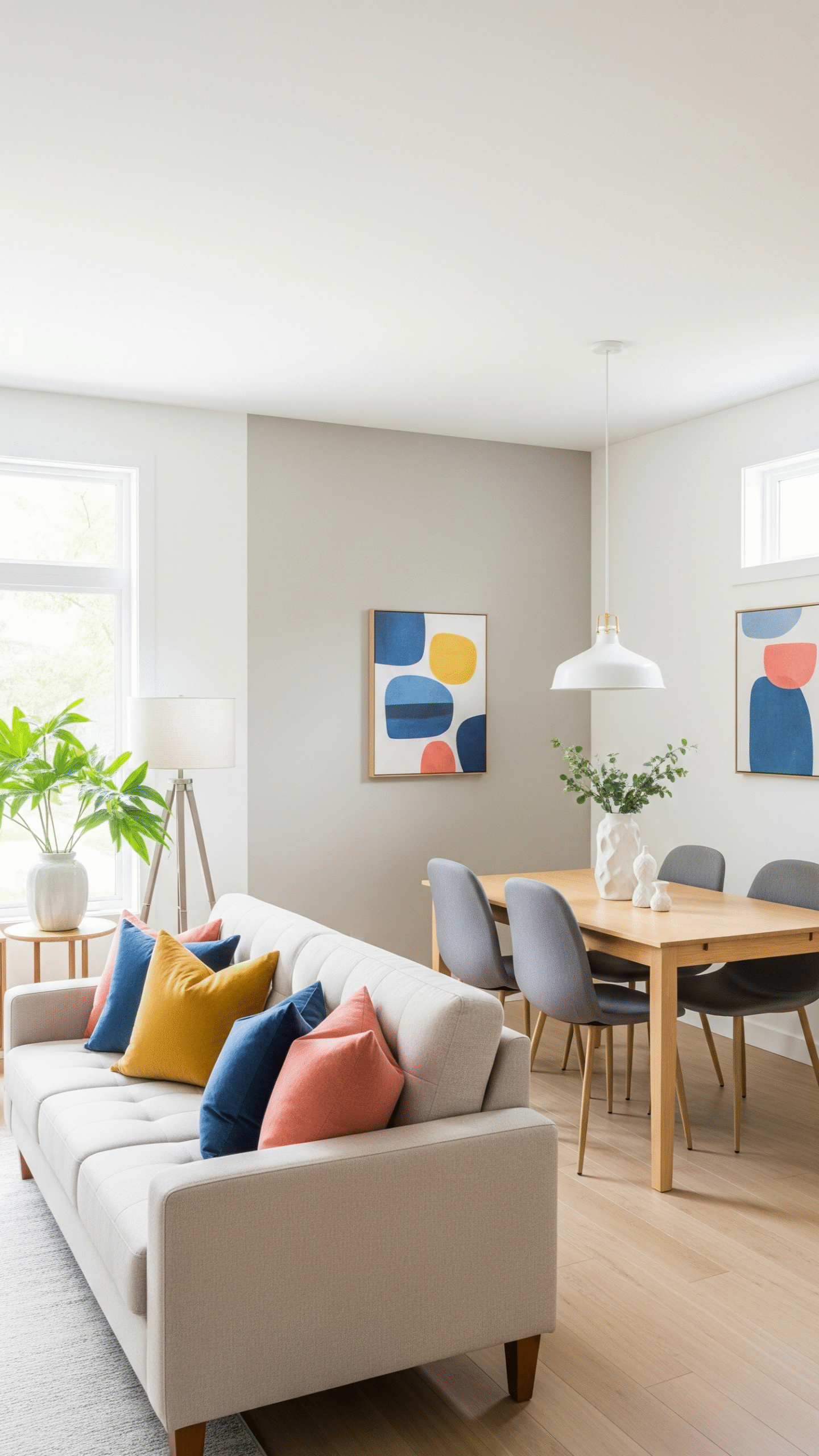
3. Use Multi-Functional Furniture
In small spaces, multi-functional furniture is your best friend. A dining table that doubles as a work desk or a sofa with hidden storage can make your combo space more efficient. Extendable dining tables are another great option, allowing you to expand for guests but save space when it’s just the family. Similarly, a slim console table can serve as a room divider, a buffet, and even a home office desk when needed.
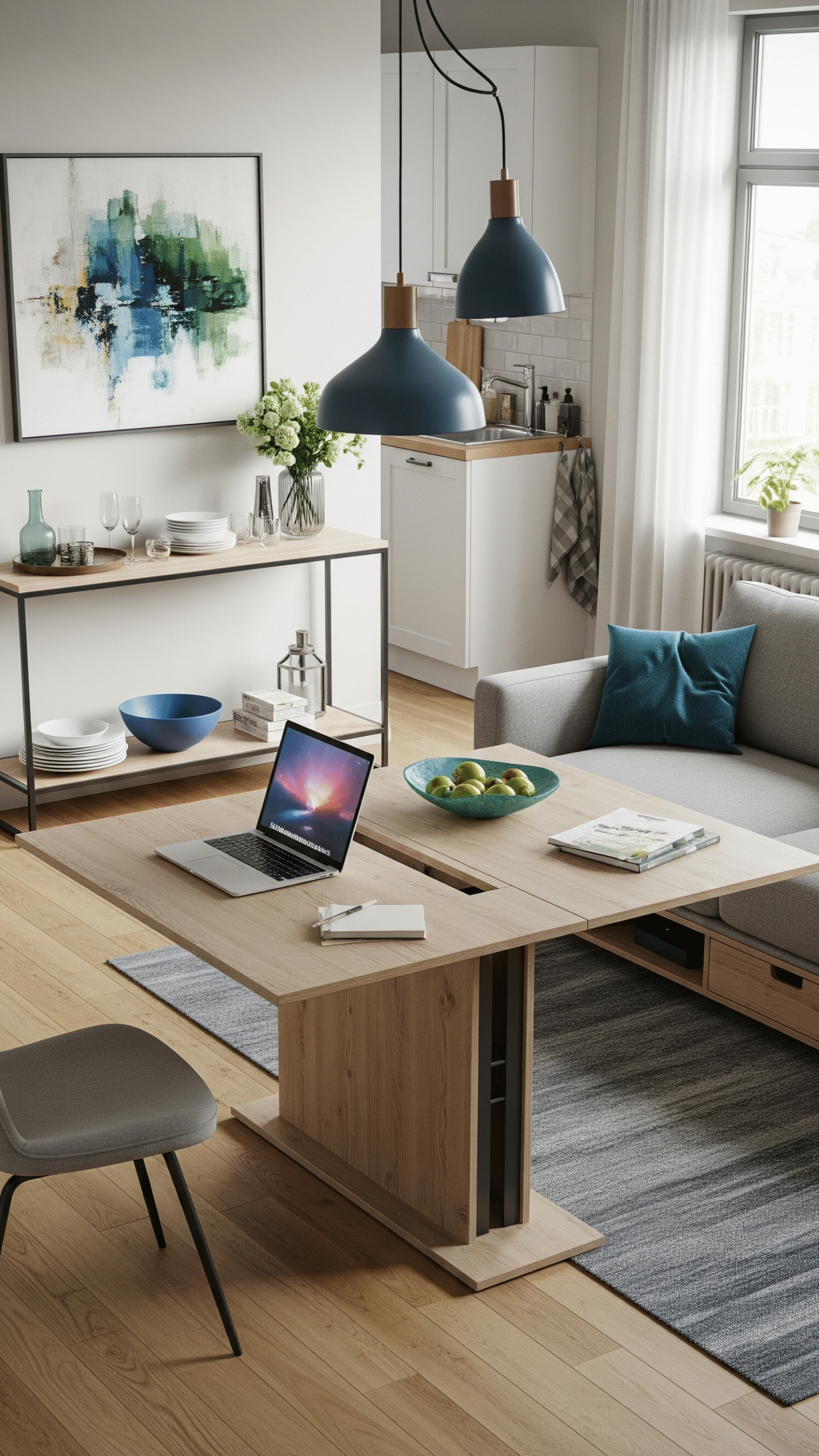
4. Incorporate Lighting for Ambience and Function
Lighting plays a huge role in defining spaces. Use a statement chandelier or pendant above the dining table to anchor that area, and softer ambient lighting such as floor lamps or sconces in the living room. This layered approach not only enhances the atmosphere but also helps create zones within the same open space.
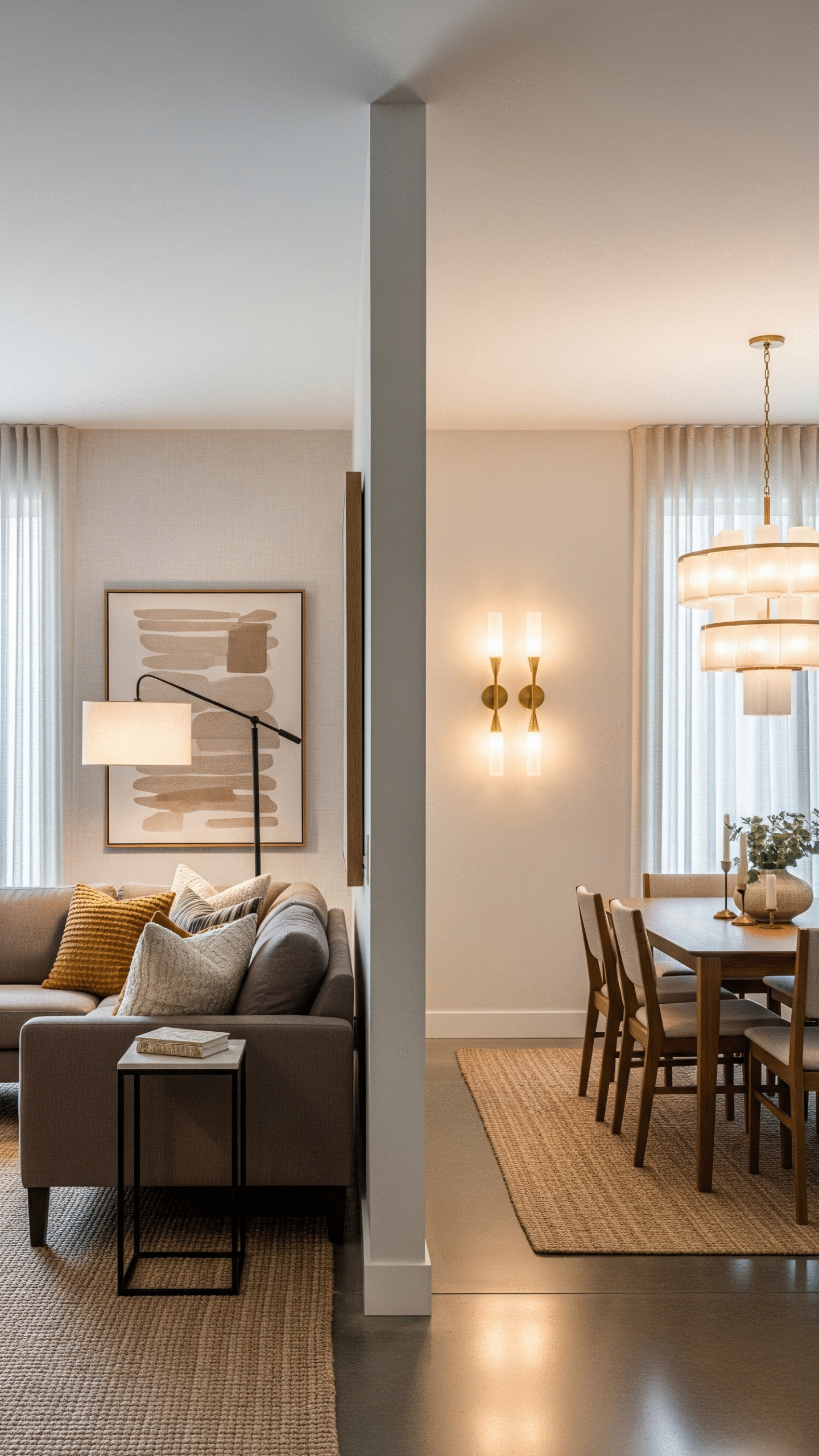
5. Keep the Layout Open and Uncluttered
One of the biggest mistakes in designing a living room dining room combo is overcrowding the area with too much furniture. Opt for streamlined pieces that balance style and function without overwhelming the space. Keep walkways clear, and avoid bulky furniture that blocks the natural flow of movement. Floating shelves, wall-mounted storage, and foldable furniture can keep things light and airy.
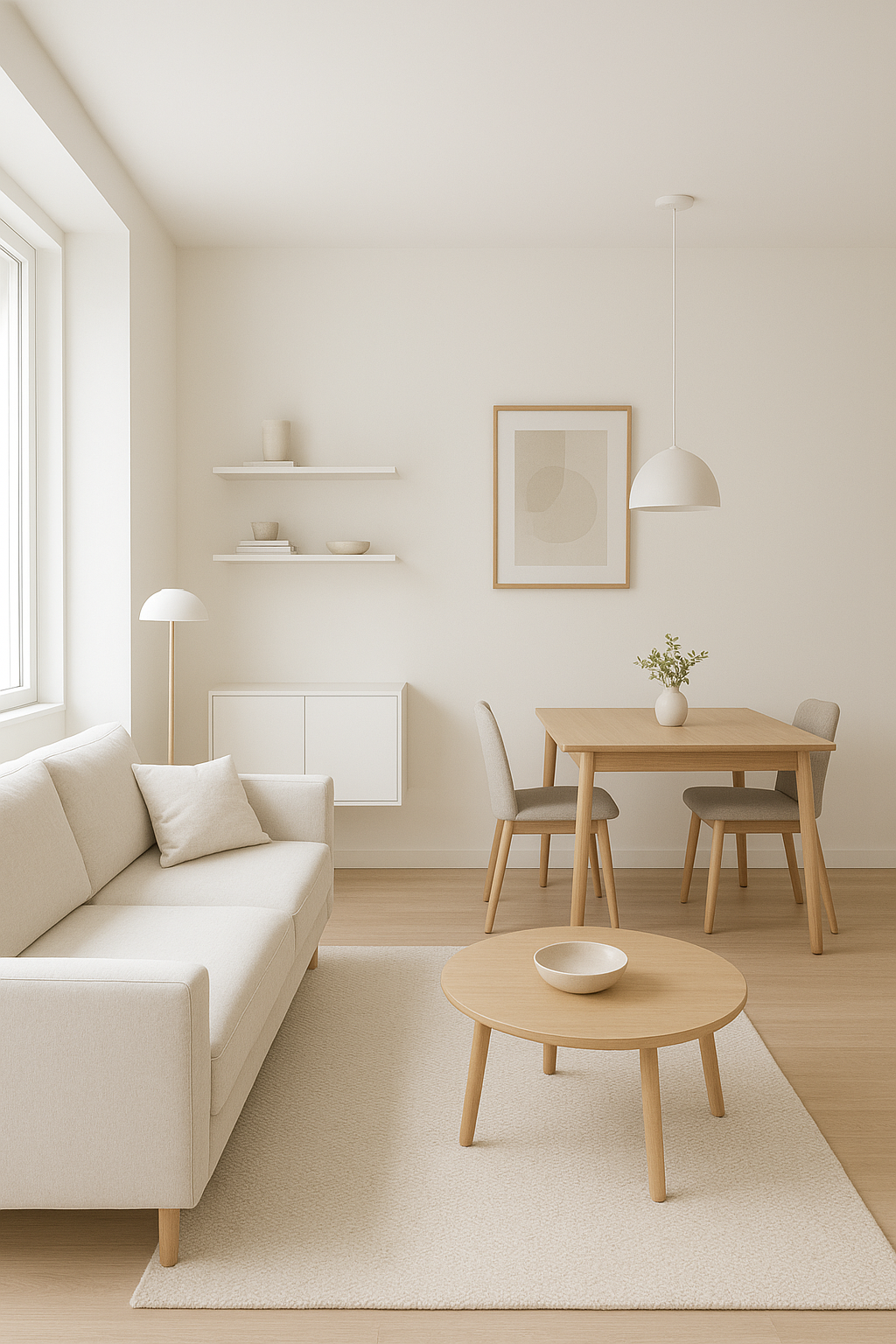
6. Add Personality with Decor
While functionality is key, don’t forget to add personality. Use artwork, mirrors, plants, and textiles to make the space feel warm and inviting. A large mirror can reflect light and make the room feel larger, while greenery adds freshness. Coordinating artwork between the dining and living areas can also visually tie them together.
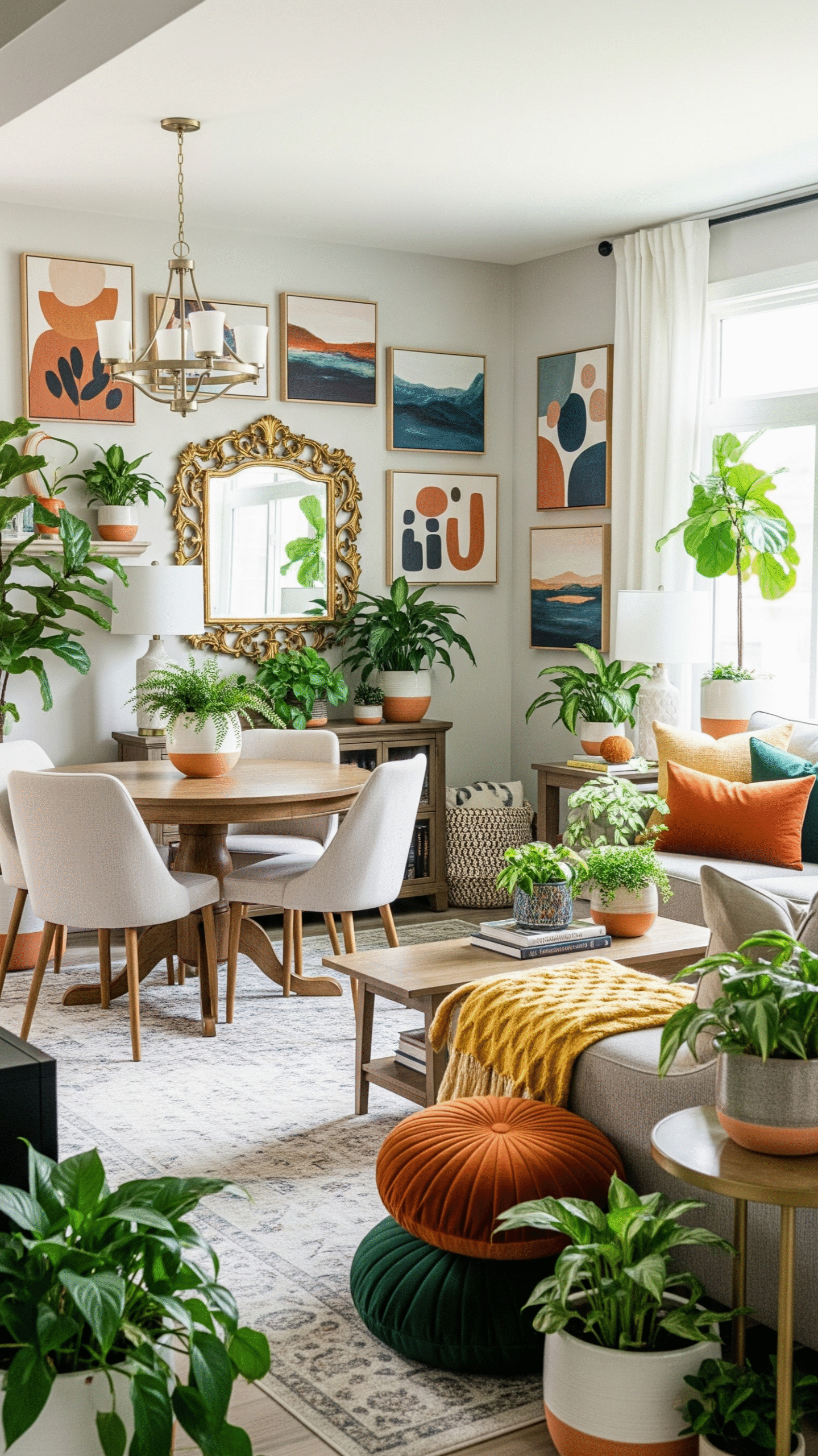
7. Create a Focal Point
Every space benefits from a focal point. In a living room dining combo, you might choose a fireplace, a statement wall, or even a bold piece of art as the anchor. From there, design your layout to highlight this feature while keeping both spaces connected.
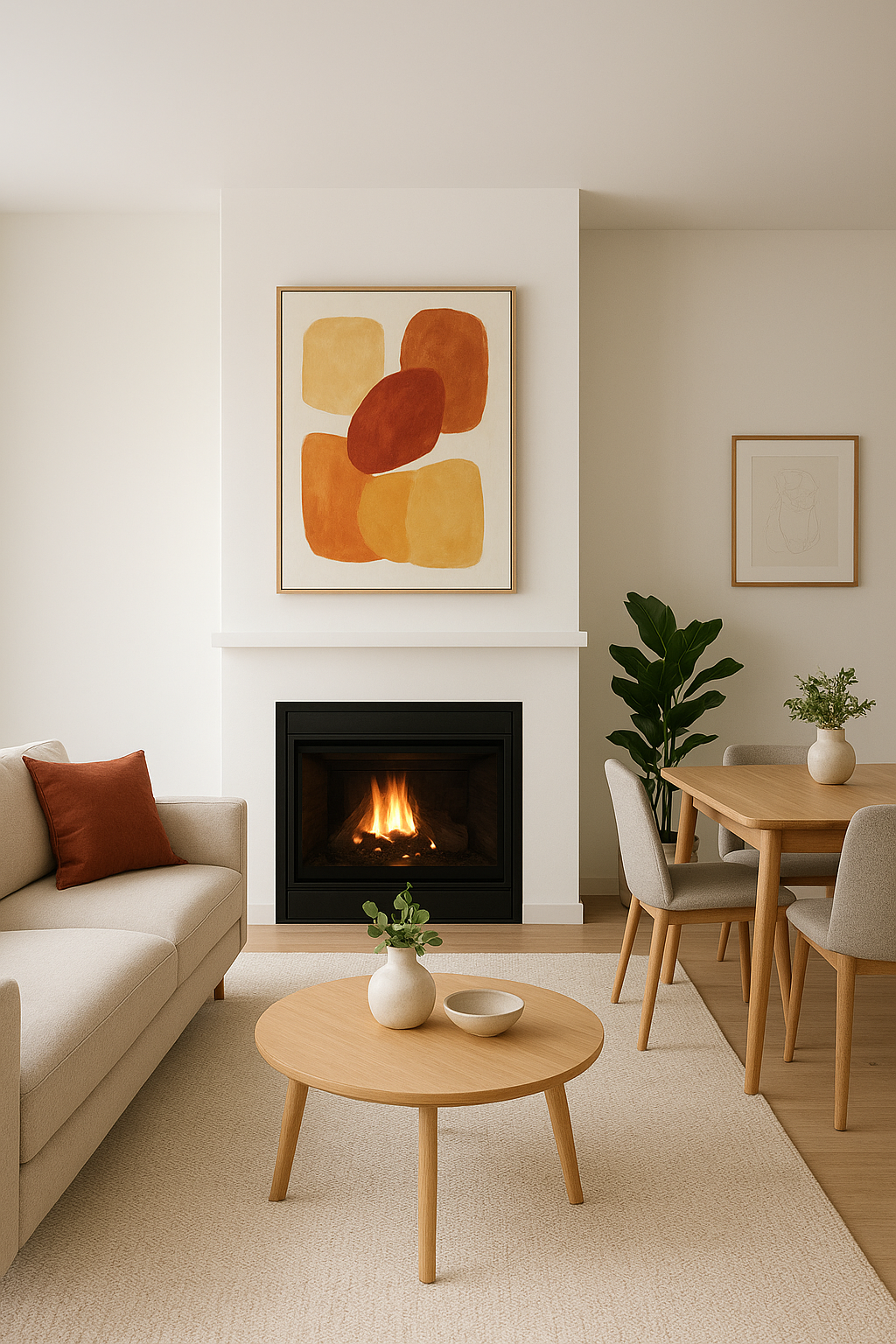
Conclusion
Designing a living room dining room combo is all about balance. By defining zones with rugs, using a cohesive color palette, incorporating multifunctional furniture, and layering lighting, you can create a space that feels harmonious and stylish. With the right choices, even a compact home can offer comfort, beauty, and functionality.
Whether you want a cozy, rustic vibe or a sleek, modern look, these ideas can help you maximize your space while reflecting your personal style. Remember, the best designs are those that make everyday living easier and more enjoyable.
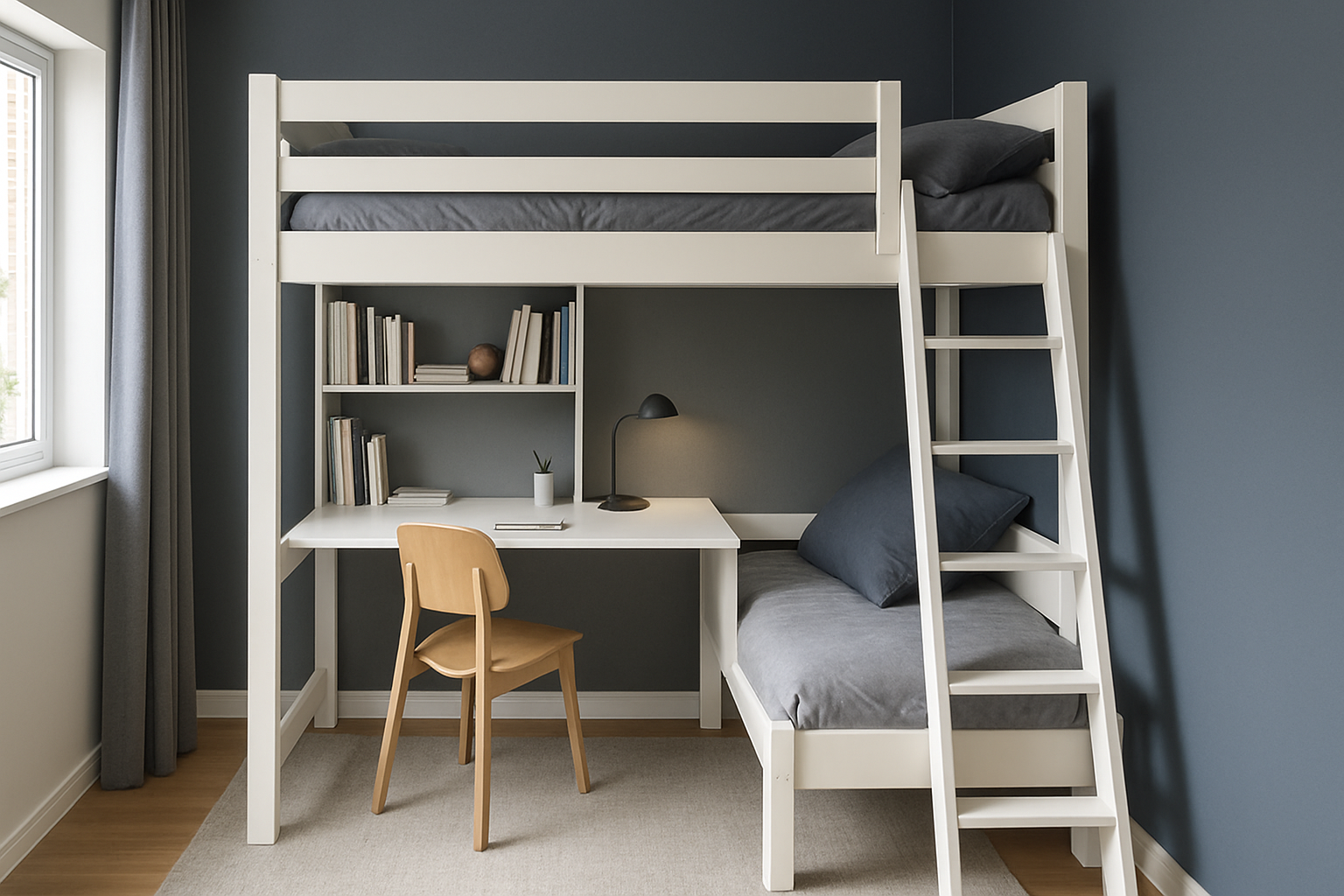
Small Room, Big Style – Teen Makeover Ideas That Maximize Every Inch
Decorating a small teen bedroom may seem like a challenge, but it can become a fun and creative opportunity to bring style and function together. Whether you’re working with a tiny apartment room, a shared sibling space, or simply a compact layout, the right makeover ideas can completely transform the look and feel of the room.
In this article, we’ll explore practical and trendy ways to maximize both storage and style, turning even the smallest room into a personal haven that reflects your teen’s personality. From loft beds and built-in desks to smart organization and stylish color palettes, these makeover ideas are designed to make every square foot count.
1. Utilize Vertical Space with a Loft Bed
When floor space is limited, thinking vertically is key. A loft bed is one of the most effective ways to free up room while creating a cool, elevated sleeping zone. By raising the bed, you open up valuable floor area underneath for a desk, cozy reading nook, or even a dresser.
Bonus Tip: Choose a loft bed with built-in shelves or under-bed drawers to further enhance functionality.

2. Create a Study Zone That Inspires Focus
A small teen bedroom needs a defined workspace, especially for students. A compact study desk with plenty of lighting and organizational tools like cork boards, clipboards, or pegboards can make studying more efficient and inspiring.
Opt for a foldable or wall-mounted desk if floor space is tight, and keep supplies neatly stored in bins or drawer organizers.
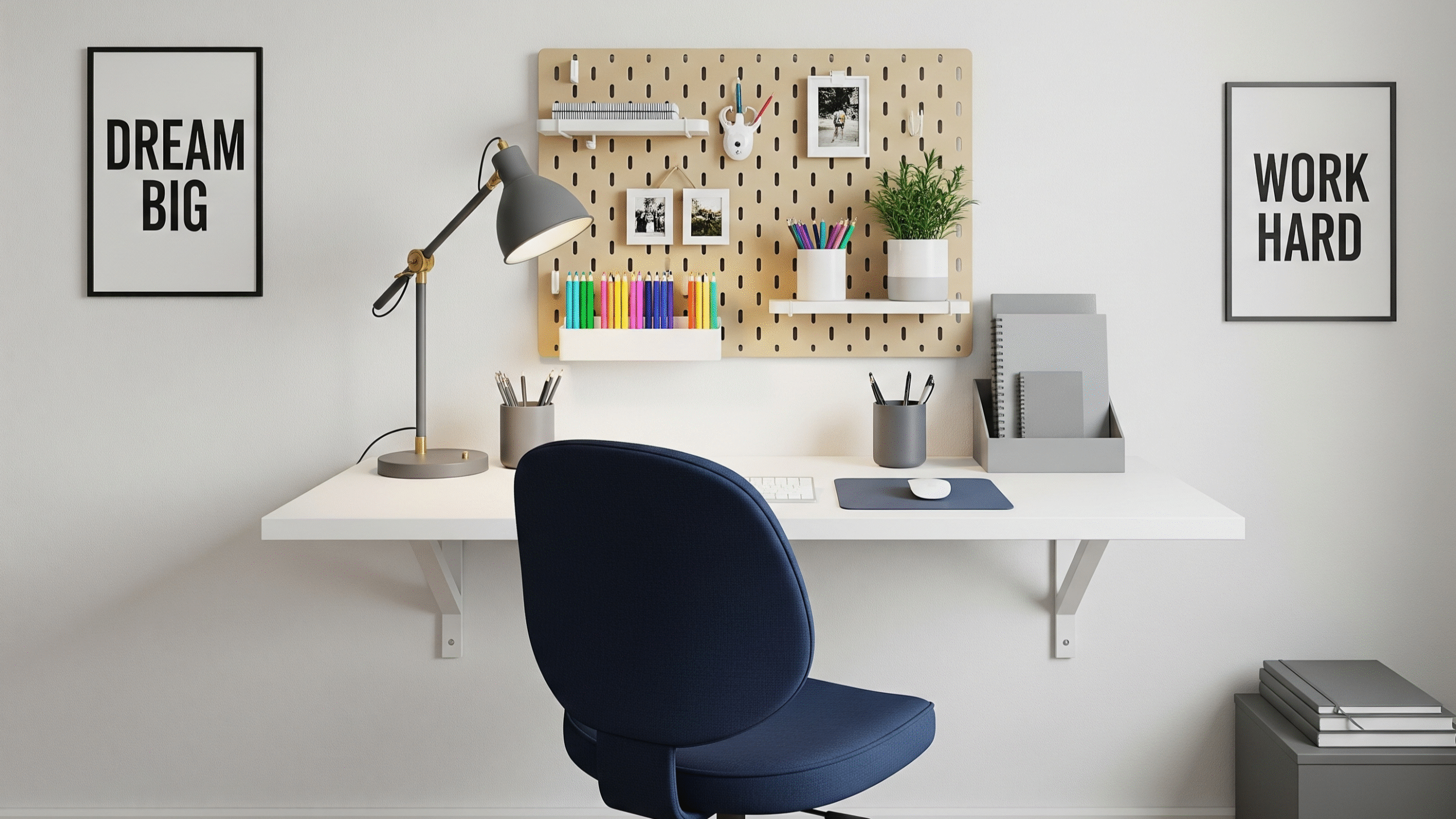
3. Stick to a Cohesive Color Palette
A light and neutral base color like white, beige, or pale gray can make a small room feel larger and more open. Add personality and contrast through accent colors—navy blue, soft mint, blush pink, or mustard yellow are popular choices among teens.
Keep furniture and textiles within the same palette to avoid visual clutter. This makes the room feel seamless and spacious.
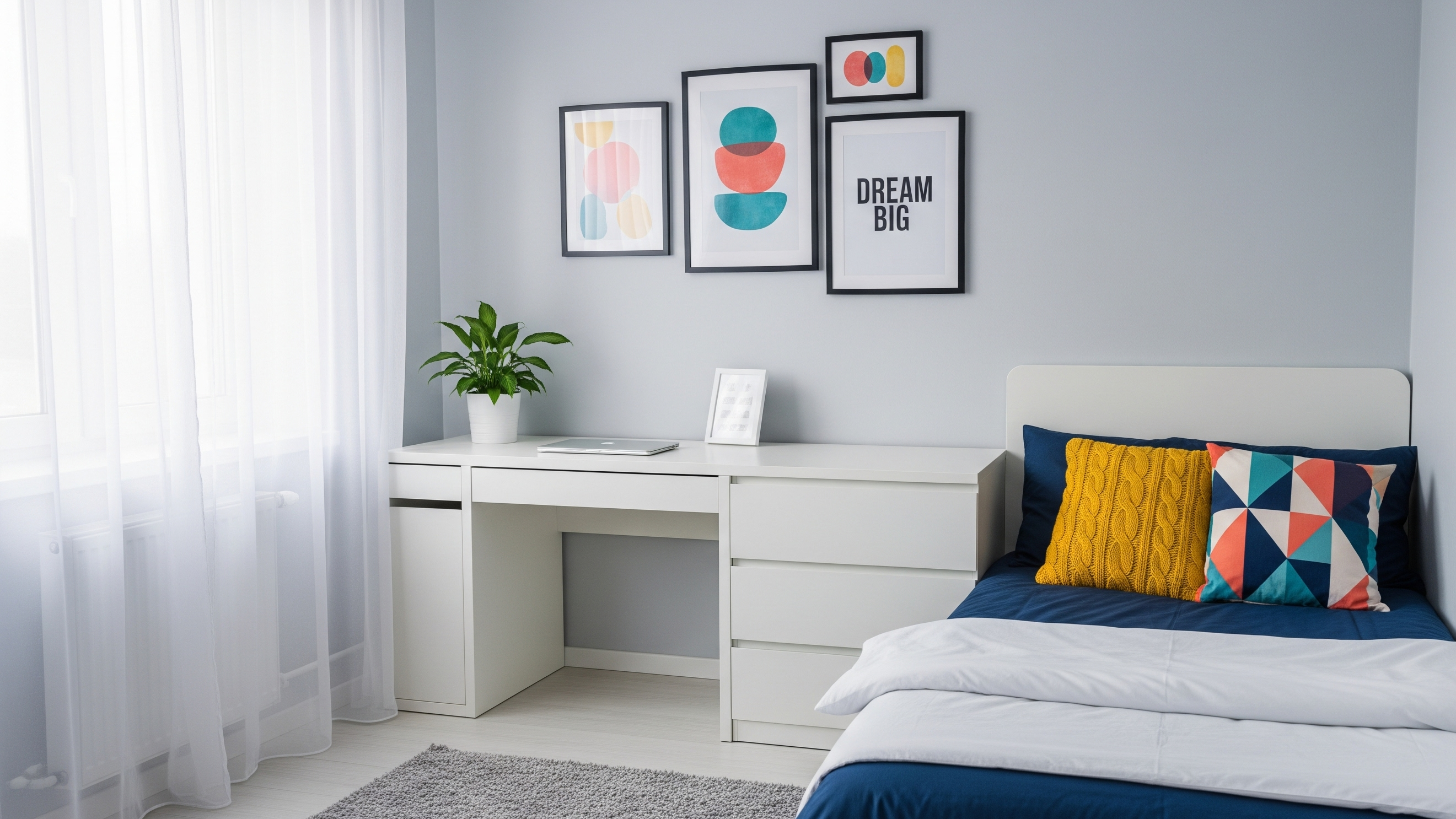
4. Choose Multi-Functional Furniture
Furniture that does more than one job is a must in small spaces. Look for beds with built-in drawers, ottomans with storage inside, or desks that can double as vanities. Foldable chairs and nesting tables can also help save space when not in use.
Floating nightstands or wall-mounted shelves free up valuable floor space, giving the room a more open feel.
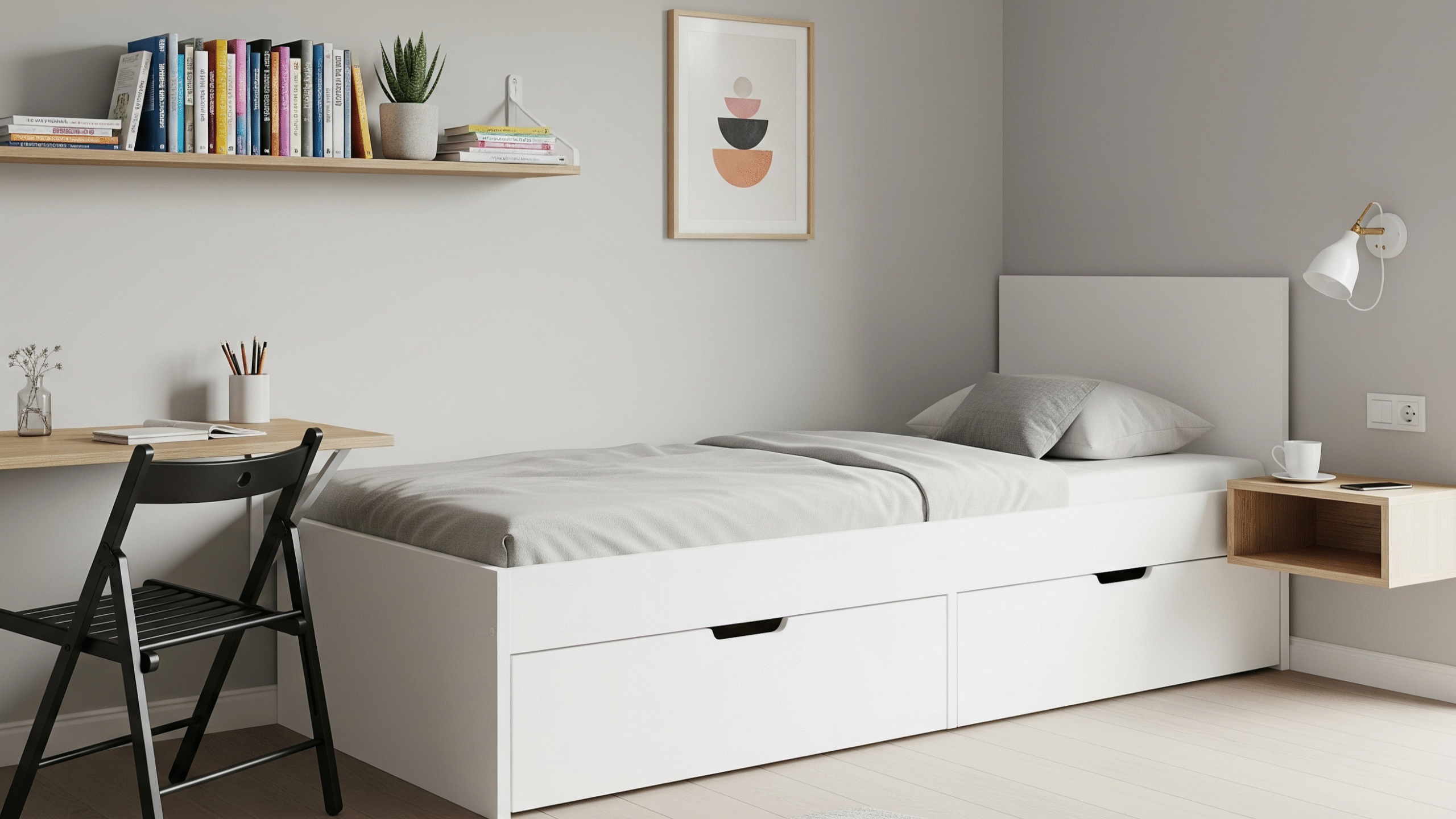
5. Make Use of Every Nook and Corner
Don’t overlook corners and awkward areas—they can often be turned into useful or decorative spaces. Try corner shelves, a narrow bookshelf behind the door, or a peg hook wall for bags and accessories.
Even window sills can serve as mini-seating spots or display areas for plants and décor.
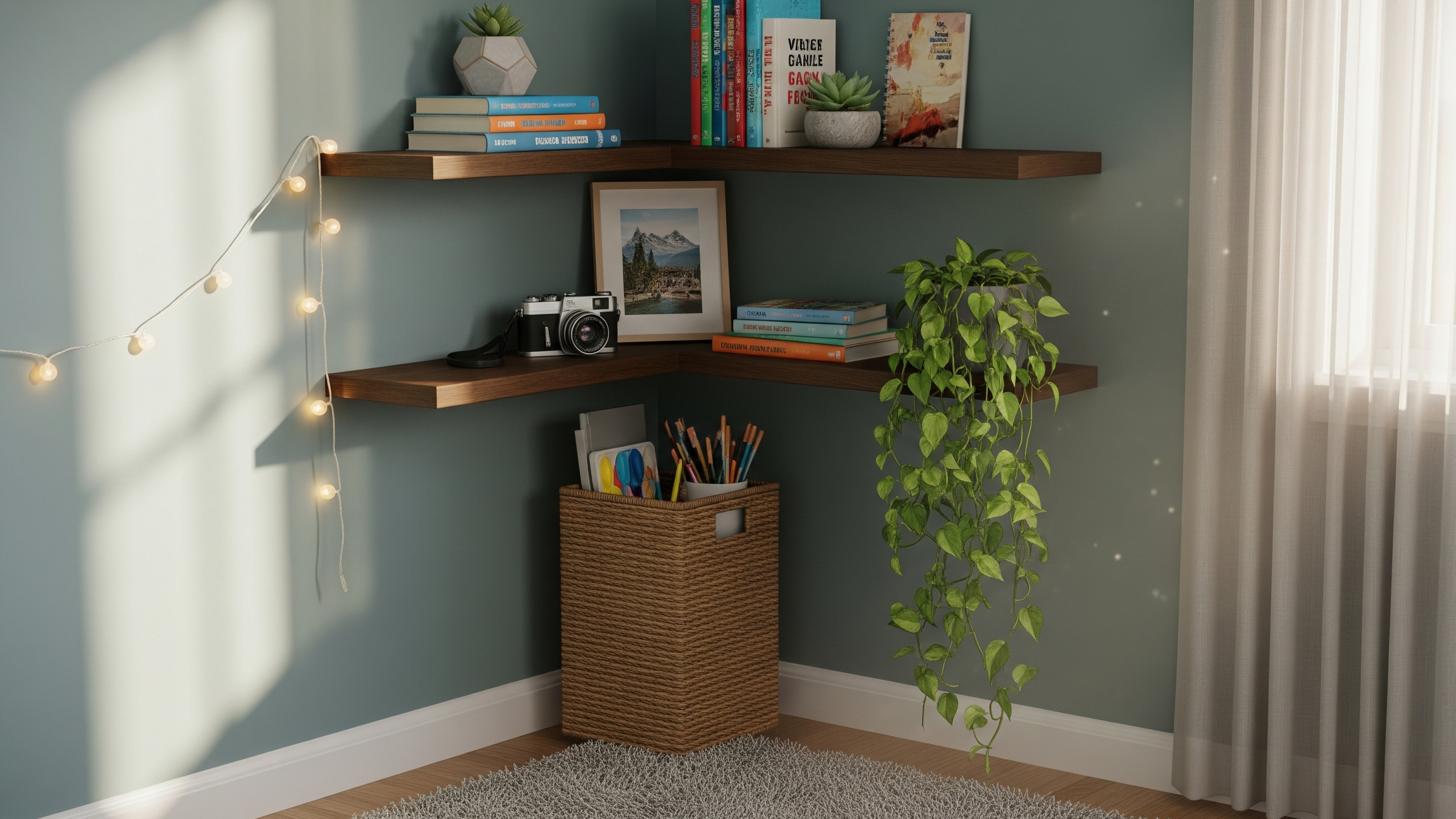
Final Thoughts
designing a small teen bedroom doesn’t have to mean sacrificing style or comfort. With some clever planning and creative choices, a compact space can become a stylish, multi-functional room that suits your teen’s needs perfectly. Focus on vertical solutions, smart storage, and a cohesive design approach to maximize every inch of the room.
From cozy loft beds and modern study nooks to sleek color schemes and multi-purpose furniture, these makeover ideas prove that small rooms can have big personality.